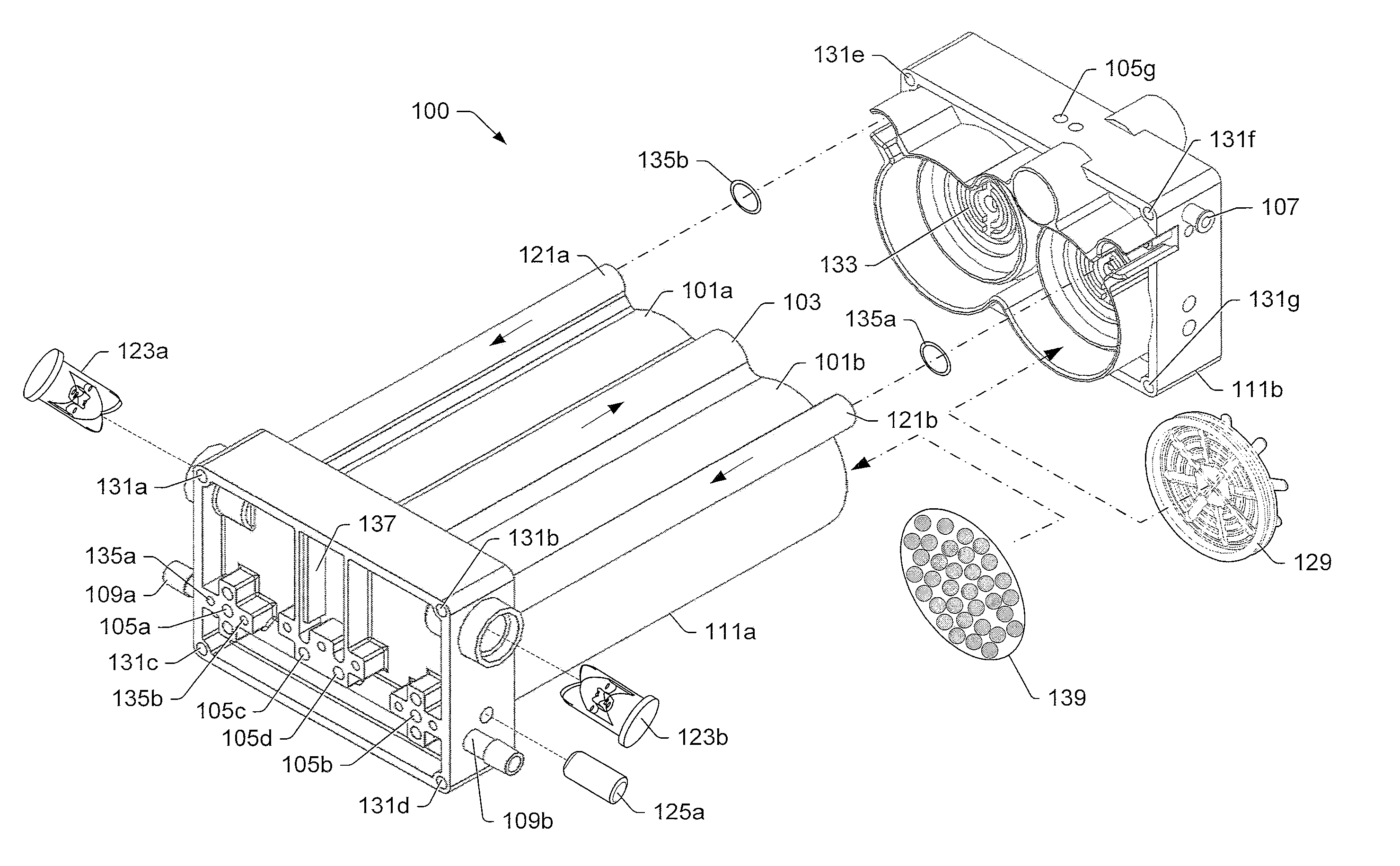Oxygen concentrator apparatus and method with an oxygen assisted venting system
a technology of oxygen concentrator and oxygen assisted venting, which is applied in the direction of valve operating means/release devices, separation processes, instruments, etc., can solve the problems of reducing the sensitivity of the oxygen concentrator to pressure changes. , to achieve the effect of small radius and increased sensitivity to pressure changes
- Summary
- Abstract
- Description
- Claims
- Application Information
AI Technical Summary
Benefits of technology
Problems solved by technology
Method used
Image
Examples
Embodiment Construction
[0046]FIGS. 1a-2b illustrate various views of housing components 111a-b for an oxygen concentrator 100, according to an embodiment. In some embodiments, the oxygen concentrator 100 may concentrate oxygen out of the air to provide supplemental oxygen to a user. The oxygen may be collected from ambient air by pressurizing the ambient air in a canister (e.g., canisters 101a-b) with granules 139 (e.g., molecular sieve granules) such as zeolite 391 (see FIG. 3). Other materials (used instead of or in addition to zeolite 391) may be used. In some embodiments, the air may be pressurized in the canister 101 using one or more compressors 301. In some embodiments, the ambient air may be pressurized in the canisters 101 to a pressure approximately in a range of 13-20 pounds per square inch (psi). Other pressures may also be used (e.g., if a different granule type is used). Under pressure, the nitrogen molecules in the pressurized ambient air may enter the pores of the granules 139 in the canis...
PUM
| Property | Measurement | Unit |
|---|---|---|
| length | aaaaa | aaaaa |
| pressure | aaaaa | aaaaa |
| voltage | aaaaa | aaaaa |
Abstract
Description
Claims
Application Information
 Login to View More
Login to View More - R&D
- Intellectual Property
- Life Sciences
- Materials
- Tech Scout
- Unparalleled Data Quality
- Higher Quality Content
- 60% Fewer Hallucinations
Browse by: Latest US Patents, China's latest patents, Technical Efficacy Thesaurus, Application Domain, Technology Topic, Popular Technical Reports.
© 2025 PatSnap. All rights reserved.Legal|Privacy policy|Modern Slavery Act Transparency Statement|Sitemap|About US| Contact US: help@patsnap.com



